Ash Meadows, a hidden gem in the Nevada desert, is not just a wildlife refuge but also a testament to the resilience of life in the harshest conditions. Here, underground springs nourish a diverse ecosystem, creating a lush oasis in the arid landscape. Let’s explore the wonders that await you at Ash Meadows National Wildlife Refuge.
Ash Meadows National Wildlife Refuge: Home to Rare Species
Ash Meadows National Wildlife Refuge is located outside Death Valley National Park, in the state of Nevada. Managed by the U.S. Fish and Wildlife Service, it is a unique area with oases formed by underground springs. This uniqueness has created an ideal habitat for many rare plant and animal species, especially the endangered pupfish.
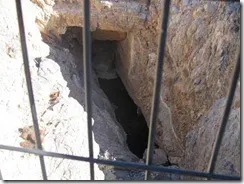
Devils Hole: Mystery Beneath the Surface
One of the most remarkable features of Ash Meadows is Devils Hole, a geothermal pool located deep within a limestone cave. The water temperature here remains constant at 91°F (33°C). Devils Hole is not only a geological wonder but also the home of the critically endangered Devils Hole pupfish (Cyprinodon diabolis).
Geologists believe the hole was formed about 500,000 years ago. The name “Devils Hole” may originate from the Paiute people, who considered deep caves sacred places, inhabited by both spirits and devils. Today, Devils Hole is carefully fenced to ensure visitor safety and protect the pupfish’s habitat.
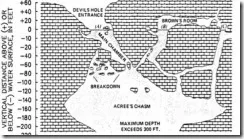
Pupfish: “Jewels” of Ash Meadows
Pupfish are small but incredibly special fish, often referred to as the rarest fish in the world. This species has survived in Devils Hole for about 10,000 to 12,000 years, longer than any other fish in Death Valley. Pupfish are adapted to harsh living conditions, including hot, oxygen-poor water.
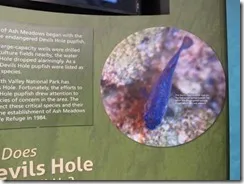
The existence of pupfish played a crucial role in the establishment of Ash Meadows National Wildlife Refuge. Protecting this species has led to numerous debates and negotiations with landowners in the area, especially regarding groundwater use for agriculture. Fortunately, the pupfish’s right to survival has been protected, and groundwater extraction is now strictly controlled.
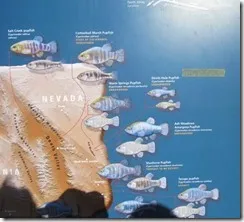
Ash Meadows Visitor Center
To gain a deeper understanding of Ash Meadows, visit the Visitor Center. Here, you will find detailed information about the refuge, the flora and fauna that inhabit it, and the history of the area. The center also offers tours and educational activities to raise awareness about the importance of nature conservation.
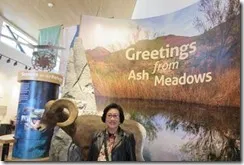
Crystal Spring: Oasis in the Desert
Following the boardwalk over the dry salt flats, you will reach Crystal Spring, a true oasis in the desert. This clear spring is fed by underground aquifers, creating an ideal habitat for many creatures.

These warm springs are believed to originate from snowmelt thousands of years ago, seeping into limestone and forming underground aquifers. In addition to pupfish, Ash Meadows is home to over 25 other endemic plant and animal species.
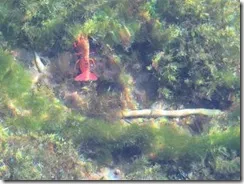
Unmissable Experiences at Ash Meadows
- Visit Devils Hole: Marvel at the unique geological wonder and learn about the rare pupfish.
- Explore Crystal Spring: Enjoy the beauty of a desert oasis and observe native flora and fauna.
- Visit the Visitor Center: Learn about the history, geology, and ecosystem of Ash Meadows.
- Hiking: Explore the trails and enjoy the pristine natural landscape.
- Birdwatching: Ash Meadows is a stopover for many migratory birds, especially in spring and fall.
Important Notes for Visiting Ash Meadows National Wildlife Refuge
- Weather: The Nevada desert has a harsh climate, with high temperatures in summer and cold in winter. Dress appropriately and bring plenty of water.
- Environmental Protection: Keep the area clean, do not litter, and follow refuge regulations.
- Safety: Stay on marked trails and be aware of wildlife.
Conclusion
Ash Meadows National Wildlife Refuge is a unique and fascinating destination where you can discover the beauty of pristine nature and learn about rare plant and animal species. Come and experience the wonders that Ash Meadows has to offer!